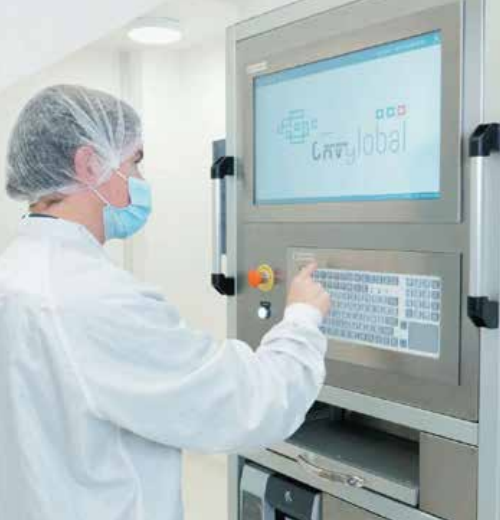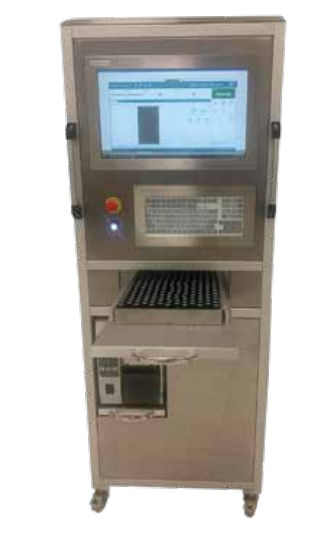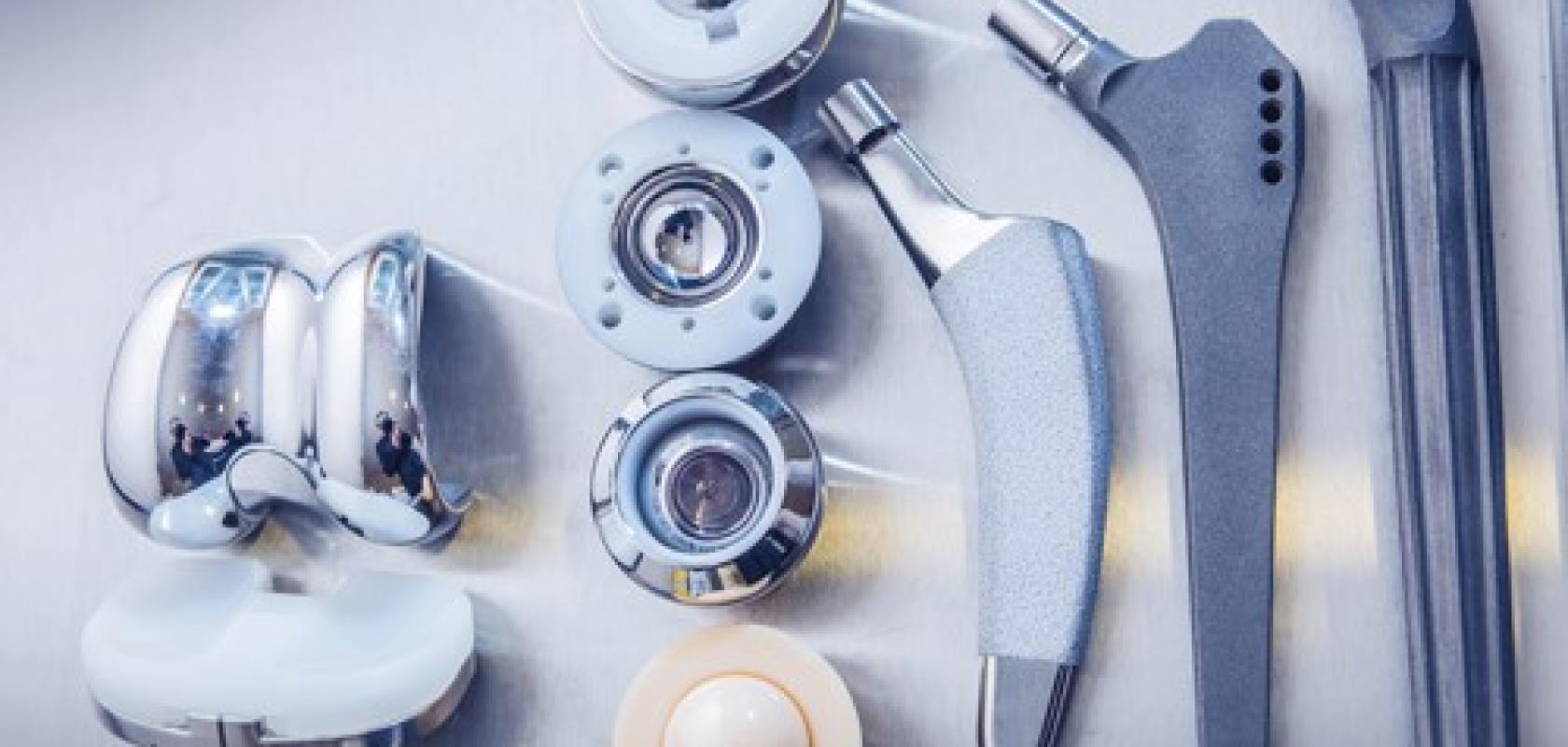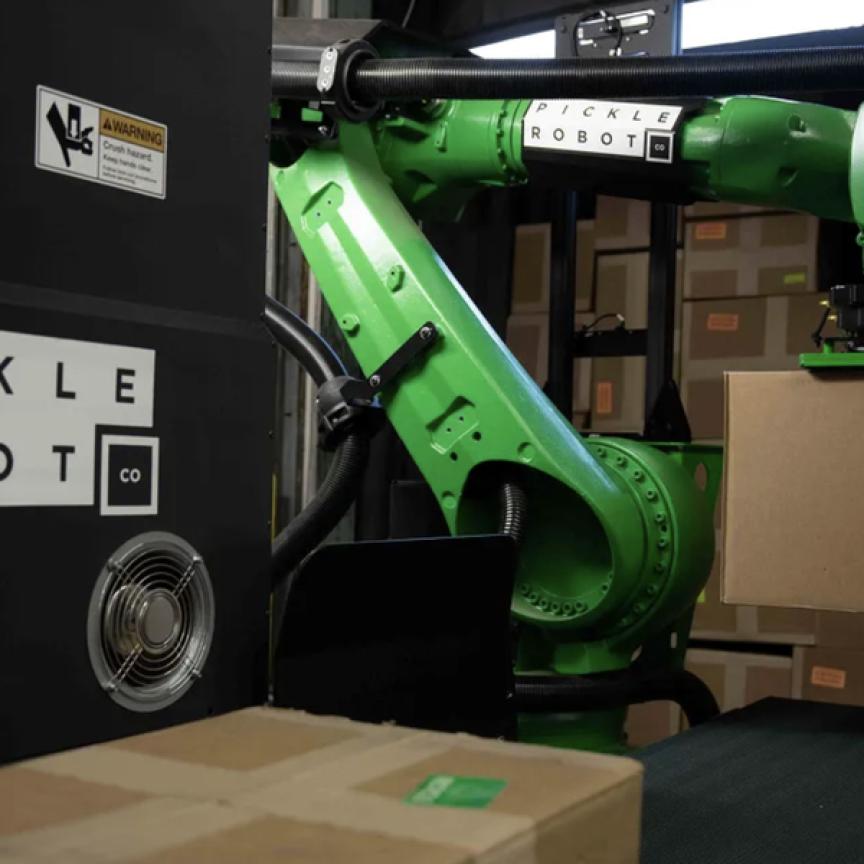Orthopaedic implants are difficult to image. They are made from materials like titanium or chromium, polished to a mirror finish, and the surfaces are curved and irregular.
Viztronics, a start-up based in Dublin, Ireland, offering deflectometry solutions, has worked on a project to automate moving the metal blanks between processing stations and packing the final implants using robot bin picking.
Viztronics proposed a couple of 3D imaging techniques – depending on whether looking at the diffuse metal blanks or the highly polished finished implant – to get enough coverage of the implant to find it’s pose and pick it up reliably with a robot.
Automation and inspection are becoming more important for implant production, according to Dr Tahir Rabbani, R&D director of Viztronics, speaking at the Vision trade fair in Stuttgart. He said: ‘The whole process of manufacturing is moving to 3D printing, and as you 3D print these parts it’s very important to inspect the dimensions and also automate the manufacturing process.’
Unpolished implants have a diffuse metallic finish and can be imaged easily using any standard 3D vision technique. Viztronics used a structured light approach, using its ZFlex sensor, which comes in two versions, between them covering a field of view of 300 to 2,000mm and 50 to 500µm resolution.
Rabbani said: ‘The diffused part has a very good structure under structured light illumination, where you can clearly see the stripes... But using the same technique on the polished implant, you’re seeing the reflections from the sides of the bin rather than from the projector, and the point cloud is mainly noise and not really usable for bin picking.’
For the polished implant, Viztronics proposed deflectometry, a 3D imaging technique that exploits the reflective surface to generate a point cloud. Viztronics’ set-up uses an LCD pattern projector, which goes through a sequence of structured light patterns that are reflected by the object. Two or more cameras image the reflections to calculate the point cloud. The technique doesn’t give 3D information directly; it gives a surface normal and a surface curvature, from which a 3D surface can be calculated.
Deflectometry doesn’t work well with binary light patterns because the camera can’t focus on both the pattern and the surface at the same time – a binary pattern won’t give a meaningful result. Viztronics’ technology is based on phase shift, which is resistant to defocus and works well for deflectometry.
To calibrate a deflectometry set-up, the first step is to calibrate the two or more cameras, including the lens distortion. Then there’s a multi-view geometric calibration, and the position of the LCD projector is taken into account.
For the structured light, Viztronics uses a progressively increasing set of frequencies, both in x and y axes. By analysing the pattern reflected by the object, Viztronics’ software can calculate which pixel on the LCD screen was reflected and seen by the camera.
The image gives a point cloud with enough coverage for the robot to pick up the part. Rabbani said: ‘The point cloud doesn’t have a full coverage of the implant, but there are enough points there that once you match it to the CAD model, you know the pose of the object as well as the position of the implant in the bin, and that’s enough information for the robot to pick it up.’
Viztronics’ deflectometry system is called DeflectoZ; combined with its Smart Phaze software, it’s used for imaging reflective surfaces, such as ceramics, polished metal, glass and in this case orthopaedic implants.
As a next step, Viztronics wants to expand its solution to image both polished and unpolished implants using one sensor. For that, Rabbani said, the proposal is to use an LCD screen and the stereo cameras for both problems – to use triangulation for diffuse parts and deflectometry for polished parts in a single bin picking system.
Client: Global Life Science Manufacturer & Distributor
Location: Ireland
Customer Challenge: Reduce time spent on batch reconciliation by 50% across 4 production lines with a payback within 12 months. 50 per cent reduction in cost of labour spent on initial vial count and reconciliation errors. Improve quality control process by achievement of 100 per cent counting accuracy eliminating human error and transposition inaccuracies.

Overall Business Outcome
A large Clinical Diagnostics company, focused on quality control products and informatics solutions, sourced CXV Global’s SmartFactoryTM Vial Counter to transform their vial production process. Their aim was to introduce greater quality control measures to their production process and reduce, by at least 50%, the time and costs associated with the vial counting and batch reconciliation processes. The customer’s production site is filling 150 batches of vials per year and is consuming up to 1,883 hours annually from the manual counting of vials and the reconciliation of the batches.
Through the implementation of the CXV Global SmartFactoryTM Vial Counter, the digitisation of the customers manual vial counting and reconciliation process, saves over 50% of the time and costs in the current process, whilst increasing the automation ratio. The resulting process efficiency savings increase the OEE of the manufacturing line whilst directly reducing the production costs.’
Customer Outcomes Achieved A single stand-alone portable CXV Global SmartFactoryTM Vial Counter reduces the time spent on reconciliation for all four lines by over 50%. Using one single solution, the organisation will increase its quality control process across all 4 lines, using the vial counting solution that can:
-
Move easily between production lines
-
Support the full spectrum of vial colours in the customer’s product range
-
Facilitates rapid changeover for counting different size trays and vials.
The new CXV Global SmartFactoryTM Vial Counter provides a stand-alone vial counting station, eliminating vial counting errors, whilst reducing the time taken to count vials by up to 50 per cent when compared to typical manual vial counting and reconciliation procedures. The system enables an additional 1,500 hours of additional production capacity in the first year, equating to 70 extra batches with an average size of 800 litres.

With a current production capacity of 200 batches annually, the time savings provided by the CXV Global SmartFactoryTM Vial Counter is sufficient enough to remove the need to deploy additional fill lines within a 5 year window, based on a 15% year-on-year growth of batch production. Through the provision of the all in one Vial Counting station, utilising state of the art vision algorithms the CXV Global SmartFactoryTM Vial Counter provides an automated vial counter to accelerate batch reconciliation and ensures that accurate counts are recorded and auditable throughout the vial production process. The customer can rest assured that the time it takes to carry out their large batch reconciliation process will be significantly reduced and 2 of the 3 people currently deployed to manually carry out this task can be redeployed elsewhere in the organisation to carry out higher value tasks.


